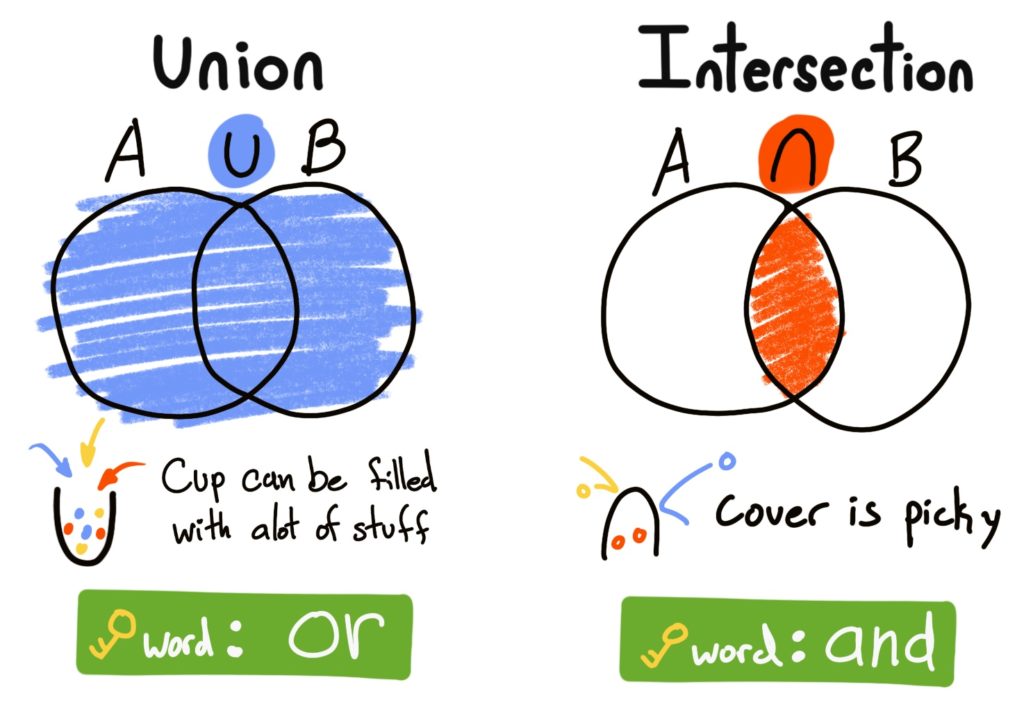Set Intersections
In other words, the intersection of two sets produces a new set containing what \(A\) and \(B\) have in common.
Helpful Mnemonic Devices: Think of the symbol “\(\cap\)” as the letter “N” in the word “iNtersection” and the symbol “\(\cup\)” as the letter “U” in the word “Union”. Here’s a visual to help.

\(A\cap B=\{3,4,5\}\)
The elements 3, 4, and 5 are the only elements that are in BOTH \(A\) and \(B\). No other element is contained in both sets.
\(B\cap C=\{3.14, 5\}\).
Notice that the elements 3.14 and 5 are the ONLY elements that appear in BOTH \(B\) and \(C\). Thus, they are the only elements in the intersection of the two sets.
\(U\cap A=\{1,3,5,7\}=A\)
Notice that the elements that are in both sets consist of all the elements in \(A\). Hence, the intersection of both sets is simply that; the set \(A\).
\(B\cap C=\{\}=\emptyset\).
Notice that the two sets have nothing in common. So, the intersection of \(B\) and \(C\) is empty, which we can represent either as \(\{\}\) or \(\emptyset\).
\(I\cap J=(2,5)\)
It is easier to find this result by shading in the interval \(I\) and \(J\) on a number line and then figuring out where they overlap. As a verbal explanation, \(I\) contains all numbers (decimals included) from 0 up to 5 (not including 0 or 5), and \(J\) contains all numbers from 2 to 10 (not including 2 or 10), these sets overlap, or intersect, from 2 to 5, but do NOT include either of 2 or 5 since neither 2 nor 5 was included in both \(I\) and \(J\). See number line below.

\(A\cap B=(2,4]\).
The sets \(A\) and \(B\) have in common all numbers from 2 up to 4 AND including 4 (since \(4\in B\)). While 2 is contained in \(A\), it is NOT contained in \(B\), so 2 is NOT in the intersection of the two sets. See number line below.

\(J\cap K=\emptyset\).
Notice that \(J\) stops at 1, whereas \(K\) starts at 4. There is no overlap of these two intervals, and so, they have nothing in common. As always, we designate any set that contains nothing by writing \(\emptyset\). (NOTE: we typically don’t write an empty interval, such as \((\ )\)for situations like this; just use the empty set notation). The number line for this situation is below.

\(I\cap K=[0,3)\).
Notice that the interval \(I\) starts at \(0\) and includes \(0\) and the second interval \(J\) ends at \(3\). The intervals overlap where indicated in red below.

